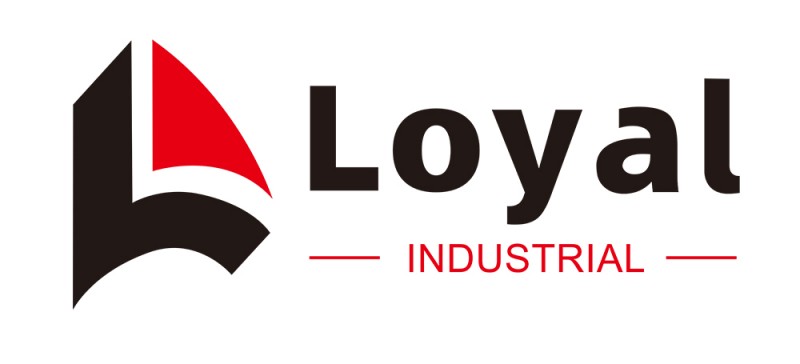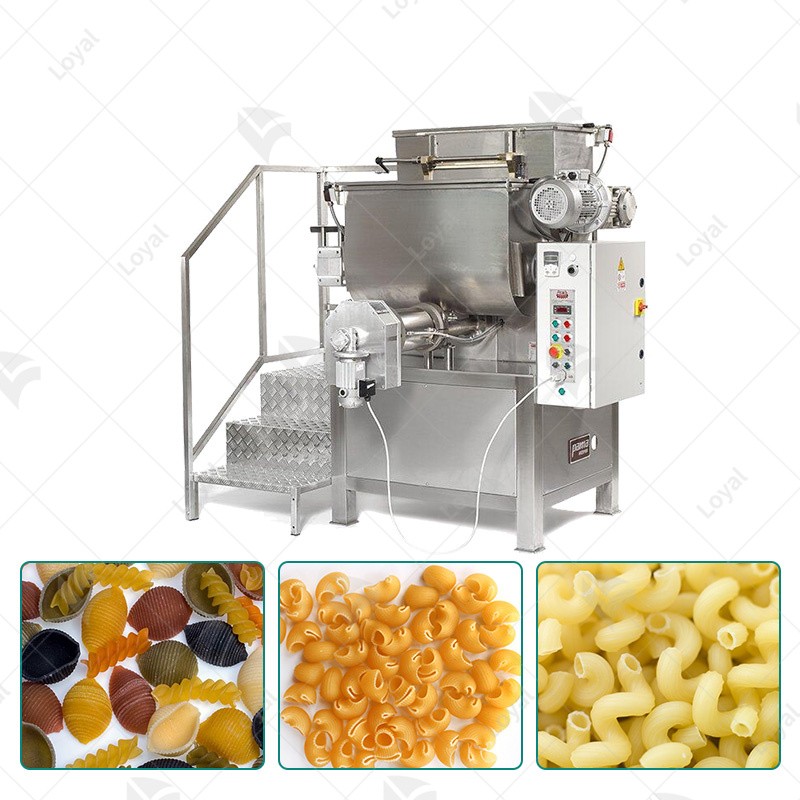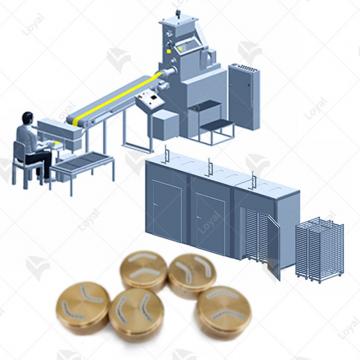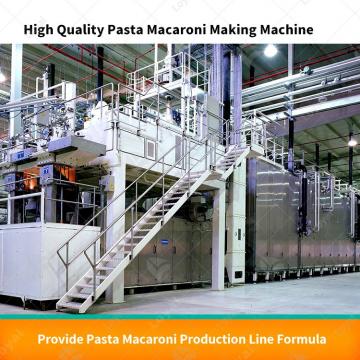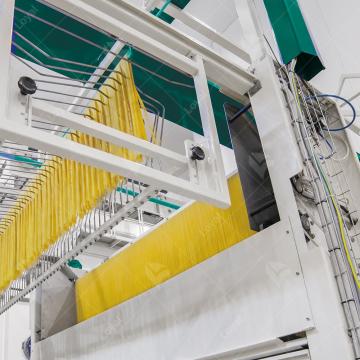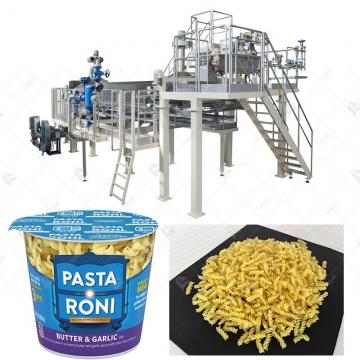Unveiling Innovation: High-Efficiency Pasta Manufacturing Machine
Unveiling Innovation: High-Efficiency Pasta Manufacturing Machine
Introduction
In the rapidly advancing realm of modern food manufacturing, automation has emerged as a pivotal force, revolutionizing processes and enhancing efficiency. This article delves into the realm of Dry Pasta Production Line, shedding light on their significance and exploring the profound impact they have on energy savings within the pasta production domain.Shandong Loyal Industrial Co., Ltd. has incorporated advanced technologies from BUHLER and BID in the production of its macaroni.
Understanding High-Efficiency Pasta Manufacturing Machines
A high-efficiency pasta manufacturing machine represents a pinnacle of technological innovation, purposefully crafted to redefine efficiency standards within the pasta production realm. This sophisticated piece of equipment goes beyond conventional methods, integrating cutting-edge features to optimize efficiency and pave the way for energy conservation. Let's delve deeper into the intricate details that make high-efficiency pasta manufacturing machines a technological marvel.
Definition and Components
At its core, a high-efficiency pasta manufacturing machine is designed to automate and streamline the pasta production process. Its components consist of intricate machinery, precision controls, and state-of-the-art materials, all working in harmony to achieve optimal efficiency. These machines encompass a range of functions, from mixing and kneading the dough to shaping and cutting the pasta, ensuring a seamless and efficient production cycle.
Technological Advancements
The fusion of full automation with optimal efficiency is a result of continuous technological advancements. High-efficiency pasta manufacturing machines leverage sophisticated algorithms, sensors, and control systems to precisely manage every stage of production. These innovations not only enhance the speed and accuracy of the process but also contribute to resource efficiency, making these machines indispensable in the modern food manufacturing landscape.
Innovative Features: Optimizing Efficiency
Exploring the innovative features that characterize high-efficiency pasta manufacturing machines reveals a world of possibilities. Precision controls play a crucial role in maintaining consistency throughout the production, ensuring that each batch meets the highest quality standards. Advanced materials, such as durable alloys and cutting-edge composites, contribute to the longevity of the machine, reducing maintenance needs and optimizing overall efficiency.
Streamlined processes further amplify the efficiency gains. From the moment raw ingredients are introduced to the final packaging stage, these machines operate seamlessly, minimizing downtime and maximizing output. This holistic approach to efficiency not only accelerates production rates but also sets the stage for substantial energy savings.
Linking Innovation with Energy Conservation
The innovative features of high-efficiency systems are not confined to optimizing efficiency alone; they form a symbiotic relationship with energy conservation. Notable brands like Barilla, Banza, Jovial, DeLallo, and Faella have been at the forefront of embracing these technologies. As Dr. Catherine Roberts, a distinguished expert in food technology, emphasizes, "The integration of precision controls and advanced materials in high-efficiency machines is a game-changer, not only optimizing efficiency but also ensuring substantial energy conservation."
These brands serve as exemplars, showcasing how the adoption of precision controls, advanced materials, and streamlined processes in high-efficiency pasta manufacturing machines results in unparalleled production rates while significantly contributing to energy savings. This alignment of technological innovation with sustainability marks a transformative shift in the pasta manufacturing industry, setting new benchmarks for efficiency and environmental responsibility.
Eco-Friendly Practices: Energy Conservation in Pasta Production
This section examines the seamless integration of energy-saving practices into high-efficiency pasta manufacturing. From the utilization of sustainable materials to the incorporation of energy-efficient technologies, these machines contribute to a positive environmental impact. Dr. Michael Turner, an environmental scientist, emphasizes, "The adoption of high-efficiency systems in pasta production aligns with global efforts towards sustainability, showcasing tangible benefits in terms of both efficiency and energy conservation."
Case Studies: Success Stories in Efficiency and Energy Conservation
Companies such as Barilla, Banza, Jovial, DeLallo, and Faella stand as exemplars of success, having embraced high-efficiency pasta manufacturing machines. Their experiences provide invaluable insights into how optimization of efficiency can go hand in hand with achieving significant energy savings. These success stories unfold lessons and best practices for businesses contemplating the adoption of high-efficiency automated systems.
Overcoming Challenges: Implementing High-Efficiency Systems
Identifying potential challenges in implementing high-efficiency pasta manufacturing machines, this section explores innovative solutions and strategies to overcome common hurdles. Addressing challenges is imperative to maximizing the benefits of automation in terms of efficiency and energy conservation. Dr. Samuel Bennett, an expert in industrial automation, affirms, "The challenges are surmountable, and with the right approach, businesses can seamlessly integrate high-efficiency systems into their production lines."
Future Trends: Advancements in High-Efficiency Pasta Manufacturing
The exploration of emerging trends and advancements in high-efficiency pasta manufacturing provides insights into the industry's future. Predictions for developments in efficiency, energy conservation, and technological innovations paint a picture of the evolving landscape, with high-efficiency automation as a key driver shaping the future of pasta manufacturing.
Conclusion
In conclusion, the unveiling of high-efficiency pasta manufacturing machines signifies a paradigm shift in the industry. The integration of automation not only optimizes efficiency but also stands as a beacon for energy conservation. As businesses navigate towards a more sustainable future, the transformative impact of these machines on efficiency and cost-effectiveness cannot be overstated. The encouragement is extended to businesses, urging them to make informed decisions that prioritize both efficiency and energy conservation in embracing high-efficiency pasta manufacturing machines.
